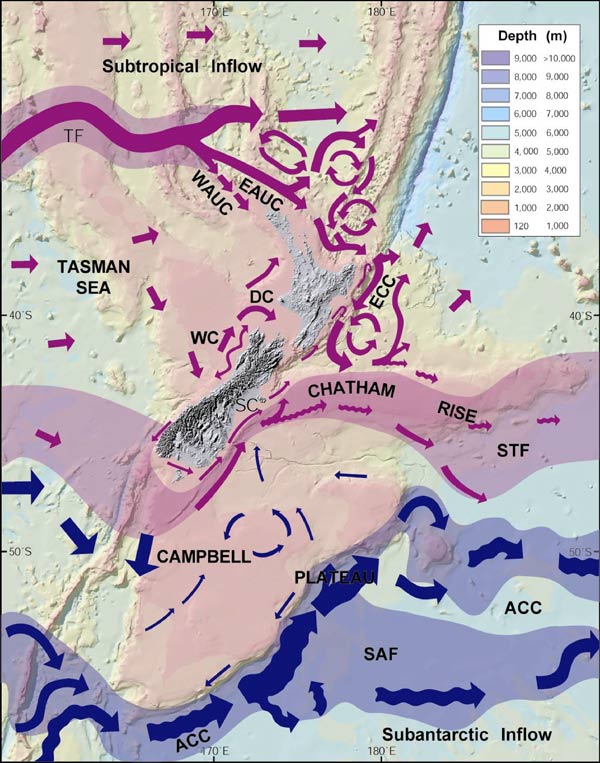
The arrows indicate warm (red) and cool (blue) surface currents around New Zealand. They are driven by west winds, and are deflected by land masses and frontal zones between water masses of different temperatures (which resist mixing because of their different temperatures and salt concentrations). Where water is well mixed by currents, eddies, winds, upwellings, and where cold and warm waters meet, nutrients that would normally sink are stirred towards sunlit surface waters. There, they can be used by phytoplankton (tiny drifting algae and bacteria). Phytoplankton form the basis of the marine food web, feeding microscopic animals (zooplankton), and in turn larger marine invertebrates, fish, squid, and other seabird prey.
Abbreviations:
ACC – Antarctic Circumpolar Current; DC – D’Urville
Current; EAUC and WAUC – East and West Auckland Currents;
ECC – East Cape Current; SAF – Subantarctic Front; STF –
Subtropical Front; TF – Tropical Front; WC – Westland
Current.
Using this item
NIWA – National Institute of Water and Atmospheric Research
This item has been provided for private study purposes (such as school projects, family and local history research) and any published reproduction (print or electronic) may infringe copyright law. It is the responsibility of the user of any material to obtain clearance from the copyright holder.





Add new comment